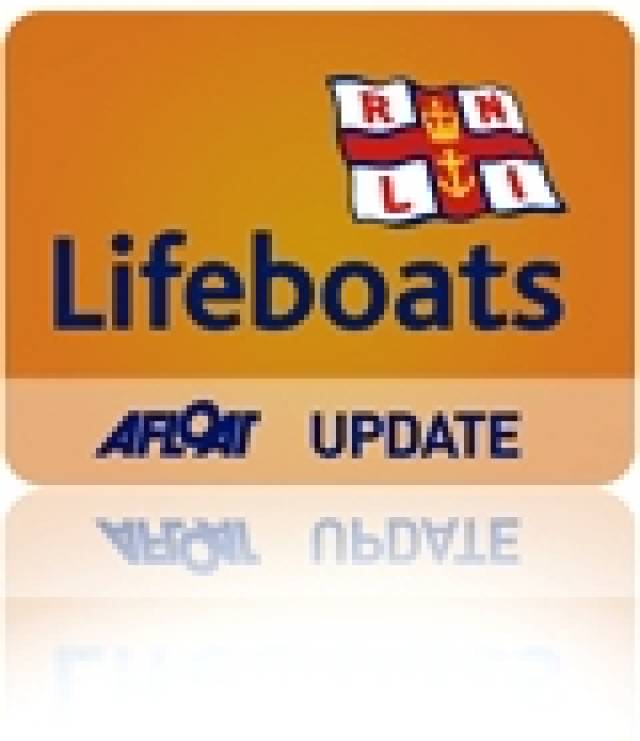#lifeboat – The Courtmacsherry RNLI All Weather Lifeboat under Coxswain Sean O Farrell was called out at 7.10 pm yesterday evening to answer a distress call from a yacht that was reported in difficulties off the West Cork Coast, as it's single female sailor onboard had reported a brief message that she was in trouble writes Vincent Donovan. The Courtmacsherry Lifeboat with a crew of seven were away immediately and proceeded to carry out a search of the area along with the Baltimore RNLI Lifeboat and the Coastguard Helicopter Rescue 117.
The Casuality was located in difficulties 10 miles south of the Old Head of Kinsale and The Courtmacsherry Lifeboat took the yacht in tow and has now arrived back to the safe surrounds of Courtmacsherry Pier.
The yacht was taking part in a race from Falmouth, England to Baltimore when she lost steering and power. Conditions at sea today were windy force 5/6. The relieved skipper from Plymouth was glad to be on land tonight after a tiring four day journey in challenging conditions.
It was the second Callout of the evening for the Courtmacsherry crew as it was called out earlier at 6pm today to go to the aid of a 40 ft pleasure fishing boat that encountered difficulties off the Seven Heads in Courtmacsherry Bay. The Lifeboat had just towed the fishing boat back to Courtmacsherry Pier when the second Callout came from Valentia Coastguard. The Station's Voluntary Lifeboat Operations Manager Brian O Dywer was loud in his praise of the Lifeboat crew this evening and commented that ' it was a great example of Lifeboats and The Coastguard Helicopter acting quickly to locate the stricken Yacht and carry out an important rescue'
Falmouth Solo Racing Yachtswoman Rescued By Courtmacsherry RNLI Lifeboat


About The Author
Afloat.ie Team
Afloat.ie is Ireland's dedicated marine journalism team.
Have you got a story for our reporters? Email us here.
We've got a favour to ask
More people are reading Afloat.ie than ever thanks to the power of the internet but we're in stormy seas because advertising revenues across the media are falling fast. Unlike many news sites, we haven’t put up a paywall because we want to keep our marine journalism open.
Afloat.ie is Ireland's only full–time marine journalism team and it takes time, money and hard work to produce our content.
So you can see why we need to ask for your help.
If everyone chipped in, we can enhance our coverage and our future would be more secure. You can help us through a small donation. Thank you.





























































